How and what to cover roses for the winter to keep them until spring
Roses are flowering plants that have long adorned city flower beds and private garden plots. It is not at all difficult to grow them, difficulties can be observed only in the process of preparing for the cold weather, especially in areas where severe frosts begin in September. Let's talk about why roses should be covered for the winter, whether all the bushes need to be covered, in more detail.
Why roses need to be covered for the winter
The shelter allows you to:
- keep the roots from moisture, which comes along with autumn rains and snow;
- protect from cold, reduce the risk of exposure to sudden temperature changes on the plant;
- create favorable climatic conditions;
- prevent freezing of roots and branches.
Important! Before sheltering for the winter, pruning, top dressing, pest control and hilling of rose bushes are performed. The best time for this is the end of September.
Which roses need shelter and which don't
Do not need shelter:
- Park roses (Ritausma, Pink Grothendorst, Konrad Ferdinand Meyer, Adelaide Hootles, Hansa). If winters are mild and severe frosts are not expected, roses do not insulate. They are considered the most winter-hardy and tenacious among other plants, because the maximum that needs to be done, preparing for winter, is to huddle the bush and treat pests.
- Rosehip or species rose. Rosehip bushes, regardless of the variety, usually easily tolerate frosts.
- Winter-hardy roses. Differ in frost resistance - William Baffin, Blanc double de Coober, Charles Albanel. They are able to withstand temperatures as low as -40 degrees Celsius.
Canadian and some types of European roses winter, covered only with snow. The stems of some perennial hybrids, also left without shelter, freeze, but in summer these plants recover quickly.
They cannot do without preliminary shelter:
- climbing roses (forming a hedge);
- hybrid tea varieties;
- floribundu (occupies an intermediate position between polyanthus and hybrid tea varieties);
- standard roses (they are not a separate variety or species, the name is associated with the type of garter of the plant);
- ground cover roses (creeping along the ground or almost touching it, not tall and even dwarf plants of the varieties Akhtiar, Fair Play, Fiona).
In need of shelter, varieties are able to tolerate a drop in air temperature to no more than -3-5 degrees Celsius without consequences. At -7 or -10 degrees Celsius, they already die, so leaving such roses under the open sky in the cold season is possible only in the southern regions.
Shelter timing
The timing of preparation for winter depends on where the plant is growing:
- Central strip of Russia. Warming begins in late October - early November.
- South of Russia. They begin to prepare for wintering in November. Most often, rose bushes are left without shelter.
- Moscow region. Gardeners cover roses in the last days of September - October. In October, sometimes it already snows, so the plants are in a hurry to insulate them as early as possible.
- In the Urals and Siberia. Winter preparations begin at the end of October.
Important! At first, decorative roses are covered only at night, for the day the materials used for this are removed. But after a constant minus is established on the street, the plants are left warm even in the daytime.
At what temperature to cover roses
A slight decrease in temperature, for example, to -5 degrees Celsius, is even useful for rose bushes. Low temperatures temper the plants, contribute to its development, therefore, it is undesirable to cover roses until the end of October. If the bushes are insulated early early, then the humidity and temperature inside the shelter rises, which can lead to the development of fungal diseases and decay of the roots.
They cover the rose for the winter, leaving it in this position until spring, when the temperature is kept at -5 degrees Celsius for 7 days in a row. This will allow the plant to fall into a dormant state without consequences. Many gardeners recommend waiting for an even greater drop in temperature - up to -6 or -7 degrees Celsius.
How to cover roses for the winter
Spruce branches, straw, various non-woven materials or old things are suitable for hiding roses. There are several types of shelter, depending on the type and method of growing roses. The necessary insulation materials are procured in the summer or purchased in specialized stores.
Lapnik
Spruce paws do not allow cold air to pass through and perfectly trap snow all winter. Most often, such a shelter is used in regions where frosts are often replaced by thaws, and snow does not fall often. Lapnik is used as an additional shelter. They are covered with nonwovens or polyethylene.
Before using spruce branches:
- dry for 1-2 days;
- inspect for traces of damage by pests or diseases (if the needles are covered with a white coating, and the bark is damaged, then the spruce branch is thrown away).
To cover one bush, 2-3 medium-sized branches are enough.
Straw
Straw successfully traps heat inside. The bushes covered by it are not afraid even of a severe frost. But as a heater, it can not always be used, but only in those regions where a thaw cannot be expected during the winter. The straw quickly gets wet, cakes, rots and becomes moldy.
In spring, straw-insulated roses have to be opened earlier than other plants. Straw almost does not let the sun's rays through, which leads to a slower heating of the earth in spring and a delay in the growing season. It is also a favorite hiding place for rodents and other pests. There is a risk of damage to the root system by them and the death of the entire plant in the future.
Nonwovens
In the north and central regions of the country, non-woven materials, for example, lutrasil, are used to shelter roses. It can be used repeatedly, it:
- save the bush from excess moisture;
- will provide the rose with the required amount of oxygen (air passes freely);
- will not trap excess heat, creating a greenhouse effect.
The optimum density of the material is 50-60 g / sq. m. The prepared piece is folded into a widow and distributed over the area in need of shelter. For non-bending roses, special covers are made of lutrasil. Also use for shelter:
- geotextile;
- agrotextile;
- synthetic burlap.
Spunbond is considered to be a quality and relatively cheap material. They can cover bushes that are difficult or impossible to bend to the ground, simply wrapping them in spunbond from top to bottom.
Frame shelter
There are two types of frames - metal and wood. A frame shelter is used if it is not possible to bend the stems to the ground and organize a regular shelter using spruce branches or straw. Roses growing on trellises, some types of rose hips, erect, rigid plants need a frame shelter.
To create a frame, the iron rods are bent with an arc, the ends of which are buried in the ground. To cover one bush, 2 such rods are needed. The arcs formed by them are placed crosswise, the resulting hut is wrapped with any non-woven material, the ends of which are fixed with stones near the ground.
For a frame structure made of wood, 4-6 wooden stakes are needed, which are dug into the ground around the bush.The resulting frame is also wrapped in any suitable material.
Insulation materials
If the winter is expected to be frosty and with little snow, various insulating materials are used to insulate the bushes, for example:
- plastic wrap;
- roofing material;
Roses covered with roofing material are able to successfully endure even very strong and prolonged frosts. This is due to the greenhouse effect created inside. But not without drawbacks.
The main disadvantage of using roofing material or polyethylene is that with such a shelter, there is a great risk of rotting of the root system. There is a risk of sunburn when trying to ventilate roses in spring. The bushes will need a long adaptation period during which they need to be shaded.
Film
The film is the most demanded and frequently used insulation. It is easy to find in any market at a very reasonable price. The film is stretched over the frame, using it to create a kind of greenhouse, or simply wrapped around rose bushes with it. The film is also suitable for covering plants creeping on the ground. As an insulating material, it has all its pros and cons.
The material is reusable, if necessary, remove it without damage. With the right shelter, the negative consequences of the created greenhouse effect can be minimized.
How to properly cover roses for the winter
At the end of autumn, having completed pruning and watering the bushes, gardeners start hilling them. This is to create an extra layer of earth above the roots. The soil around the bush is cleared of fallen leaves and weeds, and only after that they begin to create a shelter for roses.
The choice of a suitable shelter method depends on the type of plant. Climbing and standard roses are covered directly along with the posts and trellises to which it is attached, creeping roses are covered on the ground, and a tent made of insulating materials is built for bush roses.
Climbing
When choosing a shelter method and materials, the location of the shrub is taken into account. If the bushes grow in one row, then they are covered with shields. A frame is arranged over the bushes growing in separate groups. For single shrubs, an individual type of shelter is chosen.
If the winter is snowy, but the frosts are not strong, then climbing roses spud and cover only with spruce branches. To prevent the plant from freezing in severe frost, a frame with an air cushion is made over it. For this, wooden pegs 15-20 cm are installed along the perimeter of the bush, towering above the plant. The pegs are wrapped with a suitable material - foil, roofing felt.
If the bush is small, then for the winter it is covered with a wooden box, on which spruce branches or snow are piled.
Bush
They begin to shelter spray roses in the second half of October. If the weather is too warm, then insulated plants can begin to develop, confusing autumn with spring. Root decay will occur. To prevent this from happening, the shelter is made based on the weather conditions. Bushes:
- cover with spruce branches;
- build a frame hut around them;
- wrapped with foil, roofing felt, and other insulating materials.
The ground under the bushes is sprinkled with straw, sawdust, and covered with wooden shields.
Stamp
First of all, the part of the roses on which the vaccination site is located needs insulation. For this:
- the upper part of the bush is wrapped with spunbond folded in 2-3 layers;
- the stem bends down to the soil;
- the crown is covered with spruce branches, straw;
- wooden boards are laid on top of the flooring made of branches and straw.
It is not advisable to use dry leaves or grass as insulation. They are often used for wintering by various pests.
Groundcover
Most often, ground cover roses do not need additional insulation; for them, fallen snow becomes an excellent insulation. But in the northern regions, plants are covered with non-woven materials, spruce branches and straw.
Floribunda
In early October, roses of this species are cut, leaving shoots 20-25 cm long. The resulting compact bushes are covered with a lot of soil and peat. After the snow falls, it is shoveled onto the resulting mounds as an additional insulating agent.
Park
Almost does not need insulation. In October, the branches of park roses are pruned to 1/3 of their usual height. Before frost, a thick layer of peat is poured and poured under the bushes, not less than 15-25 cm. If the winters are severe, then each bush is wrapped with burlap or film.
Features of the process for different growing regions
The choice of shelter, the timing of the insulation measures and the region of plant growth are interrelated:
- The middle lane and the Moscow region. The bushes are covered in the second half of October using frames and nonwovens. Before warming, the bushes are spud, cut off, nourished with the fertilizers they need for successful wintering. Climbing roses are covered by creating a special tunnel of insulating materials. Park bushes are covered with spruce branches and straw.
- South. Perennials do not harbor. Sometimes more earth and peat are poured under the bushes.
- North. Roses are covered with spruce branches, old blankets and outerwear, and a kind of greenhouse is built around them. In regions where snow falls early and lasts until spring, roses are covered with earth, wooden shields are laid on top and a large amount of snow is raked onto the resulting structure.
Important! Even if winter is expected to be snowy and not particularly cold, the plants should be insured. Shelter will never be superfluous. It happens that severe frosts do not happen until the end of February, and in March, after a slight thaw, severe frosts hit.
Experienced gardening tips
Experienced growers recommend the following to beginners:
- in order to understand when to start work in the garden in preparation for winter, they look closely at the color of the branches, in ripe shoots it is green;
- stop watering roses in mid-September;
- at the end of August, the upper part of all young shoots must be pinched (this will stop their growth);
- in September, the soil in the near-trunk circles is no longer loosened;
- they start pruning as soon as frost hits in the morning;
- fungicides or copper sulfate are used to treat parasites;
- the bushes are spud so that the graft is located underground, and not above the surface.
In warm regions, they wait until the first days of December and only then are they covered with roses. Don't rush to take cover. If a thaw comes unexpectedly, then the bushes with plants will have to be opened for airing.
Rose is a perennial plant. It is grown most often in flower beds and garden plots. For the winter, roses are almost always covered with something warm. It can be spruce branches, straw, burlap, film, wooden boards. Not all roses need shelter, there are winter-hardy varieties.
The choice of insulation methods depends on the type of plant, its position on the ground, and the region of growth. Sometimes the stems are bent to the soil, almost completely cut off at the root, or a shelter is built right around a large bush (frame method). A beginner in the breeding of these perennials is advised to read the advice of experienced gardeners.
Instructions for sheltering roses for the winter:




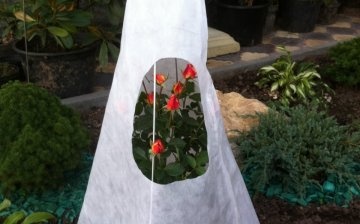

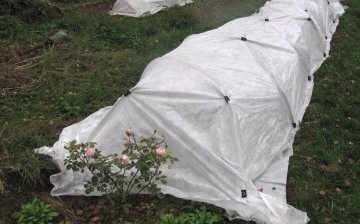




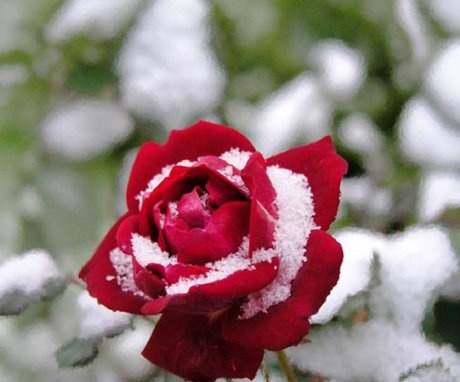
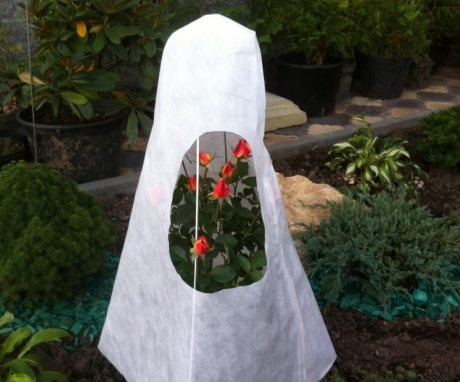
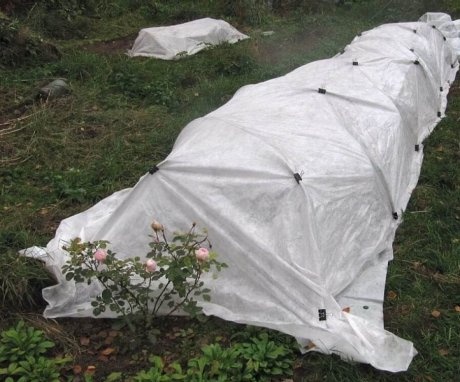
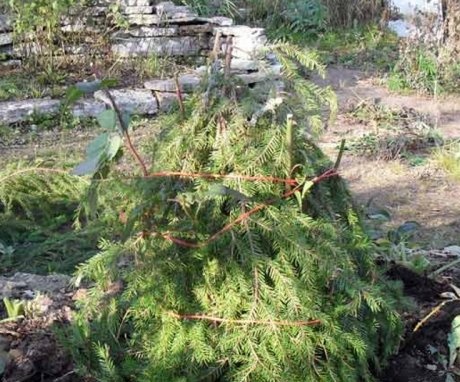
In our region, only roses grown from cuttings are sheltered. The same plants that are grafted onto rose hips are good, they tolerate slight frosts, they are not covered, in our area, there was no case that at least one bush froze out.